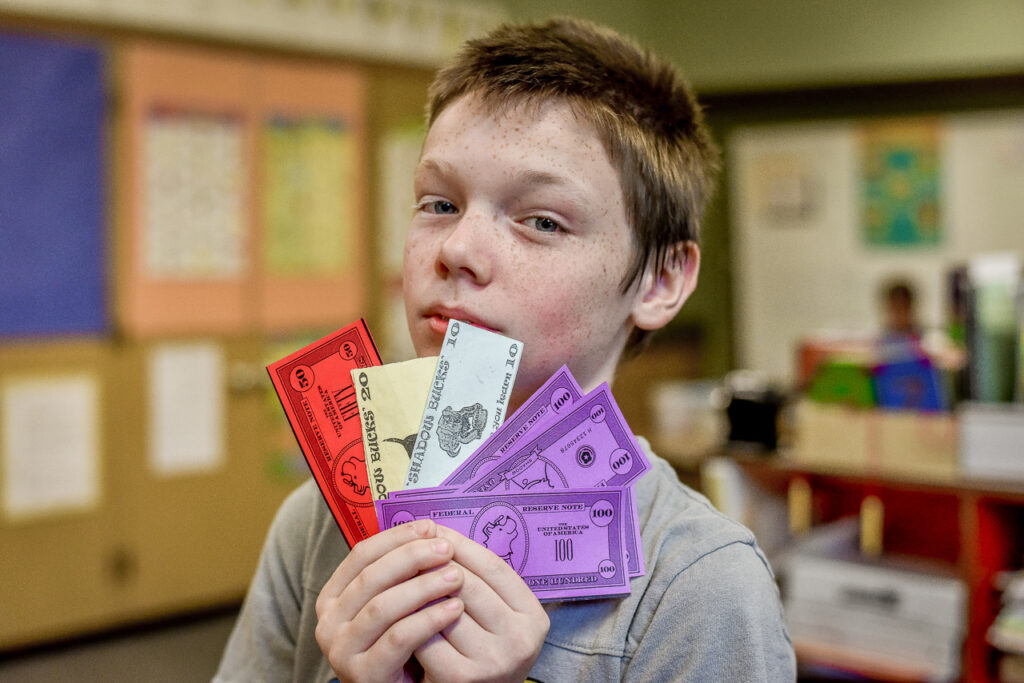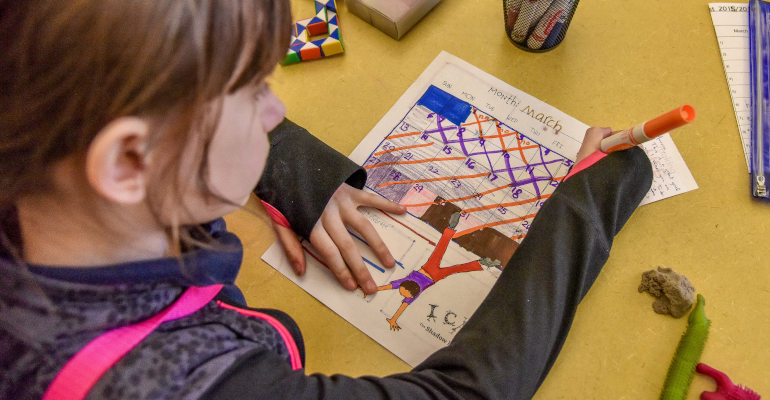With the start of the new year, many of us are setting goals and feeling optimistic about our potential for growth and improvement. But for some people—including many kids with disabilities—a “fixed mindset” prevents them from setting goals and believing they can reach them.
For over 30 years, research has shown that students with a “growth mindset” are more motivated and achieve more. A growth mindset is characterized by believing we learn from our mistakes and we can get smarter by working harder. Whereas a person with a fixed mindset believes intelligence is inherent in an individual, and more practice won’t necessarily make someone smarter, which leads to less effort invested.
Because our education system was not designed for neurodivergent people or those with disabilities, many of these students are used to underperforming compared to their peers. Consistently receiving lower grades, being punished at higher rates, and navigating ableist ideas about their abilities contributes to pervasive fixed mindsets among students with disabilities.
That’s why The Shadow Project champions growth mindsets through our programs for students, as a means to improve their academic achievement, motivation, and mental health.
We spoke with two of our long-time partner teachers on how they help their students build a growth mindset. Brian Post is a special education teacher in a self-contained communications classroom in Southeast Portland, and Sarah Stratton is a speech and language pathologist in North Portland.
What are some ways you encourage a growth mindset in your classroom?
Brian: The students in my K-2 class are quite young, so we approach “growth mindset” in simple ways. If a student thinks an activity is too difficult for them to do, whether it’s subtraction or zipping up their coat, we adults offer them support and encouragement. We let them know they can do it, they just need to learn and practice the steps, then show them and work with them step by step. Even just getting the first step or two done can be seen as a success, that the student improved by trying.
Sarah: I talk to my students about being fearless learner and how making mistakes helps us grow and learn. Recently I’ve been working on the Spanish /r/ trill with a few students and it’s such a challenging sound they often feel embarrassed to try it and feel like they just “can’t do it.” We have been doing some silly things, like laying on the floor and attempting to keep our tongue muscles really loose, lazy, relaxed, so that pass over our tongue tips swiftly and make our tongues vibrate much like the raspberry sound of our lips. I think placing myself in a vulnerable place much like the student and sometimes laughing about how hard it is and how silly it feels bond us to keep trying to work on this sound and increases our growth mindset.
How can you tell what type of mindset a student holds?
Brian: I think most students who are 5-8 years old have a growth mindset, then some of them might start to get discouraged and develop more of a fixed mindset as they get older. Observing them, you can see their attitude towards learning or doing things, especially new or challenging activities. Students with more of a growth mindset may approach the task in more than one way and/or ask for help. Students who may have developed more of a fixed mindset might only try one approach then give up, or not even think it’s worth trying at all. When students show this is when we try to break it down like I mentioned before, and show that they can learn and do each step.
Sarah: Students with a growth mindset do not often shut down, or when they do you can manage to encourage them back to a more positive state and be ready to keep trying. My students who are less willing to be silly or get very upset about trying something “again”, because they just did it, are often more stuck. Sometimes this is just session to session, just like we have a rough day, but other times I find when looking at my notes that this fixed mindset if more of a pattern for some students.
What are some ways you help your students build this mindset, especially when something “goes wrong”?
Brian: This can depend on how frustrated the student gets and how elevated they get emotionally. If a student is still rational, then I would talk about the project right away and explain that it doesn’t have to be perfect, the way the project turned out was from their best effort, and it can be good enough, or it can be revised if the student thinks it should be better. If the student is too upset in the moment, then we would work on calming strategies, then wait to talk about the project later when the student is calm enough to talk and/or try again.
Sarah: I sometimes share personal experiences of my own attempts that fell short of my anticipated outcome and explaining some of my successes after that experience helps a student. I also talk about positive self-talk when working with students who feel defeated and the power of “yet”, which is also a cute book.
Is there anything unique about your approach to supporting students in your classroom?
Brian: It’s hard for me to know, because I haven’t been in another teacher’s self-contained classroom for several years. But when I started at Lewis Elementary, the Principal encouraged me to make my classroom look and run similar to a Gen Ed class. I thought that was great advice, and has affected my classroom setup and daily schedule.

Sarah: I don’t know how different this is, but I often send homework, especially for speech students, as a way for them to earn “Shadow Bucks”. Then I talk to them that this is more than a way to get Bucks. I explain that when they practice and think about their sounds outside of speech class, helps them have more experience with trying and becoming more successful at their target sounds or speech strategies and this is a way to move towards graduation from speech. Practicing one time a week with me can make improvements slow going. It also hopefully increases their motivation, especially as they begin to see more success.
What are some of the benefits of helping a child build a growth mindset?
Brian: Well I have seen the majority of my students benefit from having a growth mindset, and it can result in them feeling better about themselves, taking pride in their work, improving their friendships with peers, discovering talents they might not have known they had and fostering those successes.
Sarah: When a student believes that they will continue to grow, learn strategies, accomplish goals as they have setbacks, but keep pushing on, they will continue to grow and often much more quickly than a student who is in a fixed mindset. This can be hard to instill in a student who is struggling with multiple learning challenges, but if the teacher can find an objective or piece of a broader goal that the student has success with (possibly more quickly, or easily), this can begin to change the student’s mindset. We all need a taste of success and this often encourages us to keep forging ahead.
We all need a taste of success and this often encourages us to keep forging ahead.


Comments are closed.